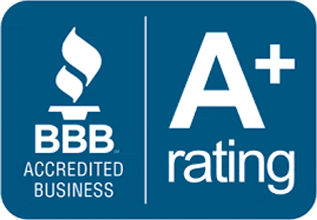Discovery Issues for Intoxilyzer 8000 Source Code
The company that manufactures the Intoxilyzer 8000 is CMI, Inc.
On June 3, 2011, CMI, Inc. announced that it does NOT have the complete source code for the only instrument on the DOT conforming products list or the only instrument evaluated and approved for use in Florida.
Click here to read more about our Recent Case Results in DUI Intoxilyzer 8000 Cases.
CMI has also confirmed that the instrument on the conforming products list differs from the instrument evaluated and approved in Florida.
The extent of the difference cannot be known even to CMI because it would require “a lot of research” by inspecting the source code. CMI now claims that portions of that source code no longer exist and haven’t been properly preserved.
Call the attorneys at the Sammis Law Firm to learn more about the status of problems with the source code for the Intoxilyzer 8000 in Florida. Our attorneys handle DUI breath test cases throughout the Tampa Bay area.
Proposed Protective Orders from CMI, Inc
CMI has begun sending out proposed protective orders that state the following:
The examination under the Selph Order, a copy of which is attached hereto as Exhibit “1,” took place on June 9-10, 2011, at CMI headquarters in Owensboro, Kentucky. Dr. Myler, who was also defendant Selph’s expert, participated in the examination.
The materials specified in the Selph Order were made available during the examination, except for that portion of the software revision histories for software revisions 8100.13 and earlier revisions, which was not available since CMI has no remaining engineering notes about those earlier revisions.
CMI made that disclosure just days before Orlando DUI Attorney Stuart Hyman and his expert witness, Professor Myler, were scheduled to arrive in Owensboro, Kentucky, to view the source code.
What happened to the software revisions for 8100.13 and earlier? That means the Florida version of the software approved by FDLE was not preserved (meaning inadvertently lost or intentionally destroyed).
It means that for every attorney in every state using the Intoxilyzer 8000, the software for the only machine placed on the DOT “conforming products” list was destroyed. CMI claims in these documents that it diligently searched the “remaining” engineering notes.
Professor Harley R. Myler testified in our cases a year ago that keeping the source code and revision histories were standard in the industry. The source code is typically saved on a disc or several discs.
What Did CMI Disclose About the Missing Source Code?
The current Manager of Engineering at CMI, Inc, Brian Faulker, filed this affidavit in Charlotte County, FL. The affidavit shows that CMI’s Manager of Engineering has reviewed CMI’s “relevant existing records” relating to the source code for the Intoxilyzer 8000.
According to the affidavit, the Intoxilyzer 8000 submitted for testing and inclusion in National Highway Traffic Safety Administration (NHTSA) Conforming Product List serves as the “analytical foundation” for all Intoxilyzer 8000s manufactured and sold by CMI, Inc.
After inclusion on the conforming product’s list, the “evaluation source code is not retained separately and therefore cannot be produced.” Furthermore, the affidavit provides:
“CMI is unable to produce, with any degree of certainty, each and every section of source code from software revisions that were not put into service by the customer. Consequently, CMI cannot reliably reconstruct version 8100.10 which directly corresponds to software versions 8100.10 included in the instrument initially tested, but not utilized by the Florida Department of Law Enforcement.”
The affidavit was dated May 31, 2011, but was notarized by Brian Faulkner on June 3, 2011.
The July 8, 2011 Affidavit Regarding How CMI Lost the Source Code
Brian Faulkner notarized the next affidavit on July 8, 2011, which was subsequently filed in Duval County to support CMI’s Motion in Opposition to Defendant’s Notice of Non-Compliance and Request for Sanctions.
It provides in part:
” 5. As anticipated, the entire Source Code set for the two software revisions ever used for evidential testing in Florida – revisions 8100.26 and 8100.27 – were made available to and examined by Dr. Myler in their native electronic format. All of the remaining items listed on Exhibit “A” attached to this affidavit were also available for inspection and examination by Dr. Myler and the attorneys [Stuart Hyman and Joerg Jaeger] with the exception of the revision history for revisions 8100 through 8100.13 of the Intoxilyzer software.
6. The revision history, consisting of revision notes, for revisions 8100.13 through 8100.27 were grouped together based on those revisions that were released to the Florida Department of Law Enforcement (“FDLE”). Not all revisions were released to FDLE.
7. In the days leading up to the examination of the Source Code, as CMI continued to compile the materials for the court-ordered examination, it first became apparent that CMI’s records did not include any engineering notes for revisions to the Intoxilyzer 8000 software predating and including revision 8100.13.
8. CMI continued its efforts to locate those engineering notes right up to the first day of the Source Code examination, but to no avail. Absent such notes, it is not possible for CMI to assemble a revision history that would encompass the earliest revisions to the software.
9. CMI presently has no way of verifying what revision of the software was included in the Intoxilyzer 8000 submitted to the NHTSA for inclusion in that agency’s Conforming Products List. Consequently, there is no way to ascertain what components of the Source Code would relate to the software revision included in the instruments submitted to NHTSA ten years ago in 2001. As such, neither the Source Code for that software revision nor the engineering notes reflecting subsequent changes to that revision can be produced.
10. Additionally, there is presently no way for CMI to verify what aspects of the Source Code correspond to software revisions 8100.10, which was submitted in 2002 to FDLE in connection with approval of the Intoxilyzer 8000. As a result, there is presently no way for CMI to reconstitute the Source Code for that software revision such that it can be known, for a fact, that it corresponds to the software revision 8100.10 submitted to FDLE. Therefore, neither the software revision nor the engineering notes reflecting subsequent changes thereto before revision 8100.13 can be reliably produced.
11. Since neither the original revision of the software included in the instruments supplied to NHTSA nor revision 8100.10, which was included in the instrument originally submitted to FDLE, was ever actually used for evidential testing in Florida, the engineering notes pertaining to those revisions were never created. At no time since the subpoenas were served did CMI destroy or discard any portion of the revision history or related engineering notes.
12. Intoxilyzer 8000 instruments with software revisions 8100.26 and 8100.27 were resubmitted to NHTSA for reevaluation in 2007, at the request of FDLE, and NHSTA determined the instruments running those revisions to be in compliance for products listed on its Conforming Products List.”
History of Discovery Issues Regarding the Intoxilyzer 8000 in Florida
Under State v. Bender, 382 So.2d 697, 699 (Fla. 1980), the Supreme Court of Florida recognized that the statutory framework assumes the test is reliable without the need for the prosecutor to establish the meaning of the test results by expert testimony.
In this decision, the Florida Supreme Court approved a procedure whereby the prosecutor can present testimony in evidence concerning the driver’s intoxication, which includes:
- an approved alcohol test method by a properly licensed operator;
- the fact finder may presume that the test procedure is reliable,
- the operator is qualified, and
- the presumptive meaning of the test as set forth in section 322.262(2) is applicable.
Bender v. State, 382 So.2d 697 (Fla. 1980). Additionally, the Bender decision provided that the Defendant could “attack the reliability of the testing procedure, qualifications of the operator, and the standards establishing the zones of intoxicants levels.”
In essence, the Implied Consent Law gives the prosecutor an evidentiary shortcut that allows it to present incriminating evidence against a particular defendant by providing documentary evidence of the instrument’s maintenance and certification.
Jury Instructions in a DUI Breath Test Case
The trial court is then required to instruct the jury that a rebuttable presumption of impairment exists from those persons who register a result of .08 grams of alcohol per 210 liters of breath on the instrument.
A criminal defendant has no other means to protest the admissibility of the breath test results into evidence absent a showing of unreliability.
According to expert testimony by Dr. Myler, the defendant only has one direct method of showing that the machine is inaccurate or unreliable – by examining the source code.
The Florida Department of Law Enforcement (FDLE) claimed it did not know if it possessed any right to the source code for the Inotoxilyzer 8000 in a lawsuit filed in Leon County, FL.
Improper Exercise of Legislative Authority
In approving the statutory scheme that essentially provided a shortcut to admitting the breath test results, the Bender Court found the scheme to be a proper exercise of legislative authority where the defendant has a “right to their individual proceeding to attack the reliability of the testing procedures.” Bender at 697. See also State v. Donaldson, 379 So.2d 728 (Fla. 1991); Robertson v. State, 604 So.2d 783 (Fla. 1992).
At the time of Bender, the statutory scheme provided under 316.1932(4) additional rights to the “full disclosure” of information related to the breath test.
In State v. Atkins, the court declined to rule “on any of the motions filed relating to the Defendant’s challenge of the implied consent’s compliance with FDLE rules and whether the FDLE rules comply with Florida Statutes.
The Atkins Court did find the Defendant’s arguments questioning the status of the instruments as an “approved” instrument under Florida’s implied consent statute section 316.1932(1)(a) to be compelling.
Since Section 316.932(4) was amended, the statutory scheme is no longer a proper exercise of legislative authority because the defendant no longer has a right to attack the reliability of the testing procedure.
Since Bender the FDLE Eliminated FORM 34
FDLE Rule 11D-8.003 lists the Intoxilyzer 8000 using software evaluated by the FDLE in accordance with Instrument Evaluation Procedures FDLE/ATP Form 34 – Rev. March 2004 as an approved “breath test (instrument) for evidentiary use…”
The Rule does not specify the electrical component configuration or computer software version of the approved Intoxilyzer 8000.
Before the 2004 change, the rule required the manufacturer to notify FDLE in writing before making any modifications and for FDLE to approve such modifications under the Form 34 guidelines.
However, no such requirement exists in the rule after the 2004 amendment. A change in the instrument no longer requires the FDLE to do Form 34 approval. The amended rule now allows FDLE to merely “evaluate” the instrument.
Learn more about searching FDLE’s Intoxilyzer 8000 Records.
Free Consultation
Submit this form to request a free and confidential consultation with one of our attorneys.
Our Office Locations
Tampa Office:
Sammis Law Firm, P.A.
1005 N. Marion St.
Tampa, FL 33602
(813) 250-0200
New Port Richey Office:
Sammis Law Firm, P.A.
7509 Little Rd.
New Port Richey, FL 34654
(727) 807-6392
Clearwater Office:
Sammis Law Firm, P.A.
14010 Roosevelt Blvd. #701
Clearwater, FL 33762
(727) 210-7004
Our Attorneys












